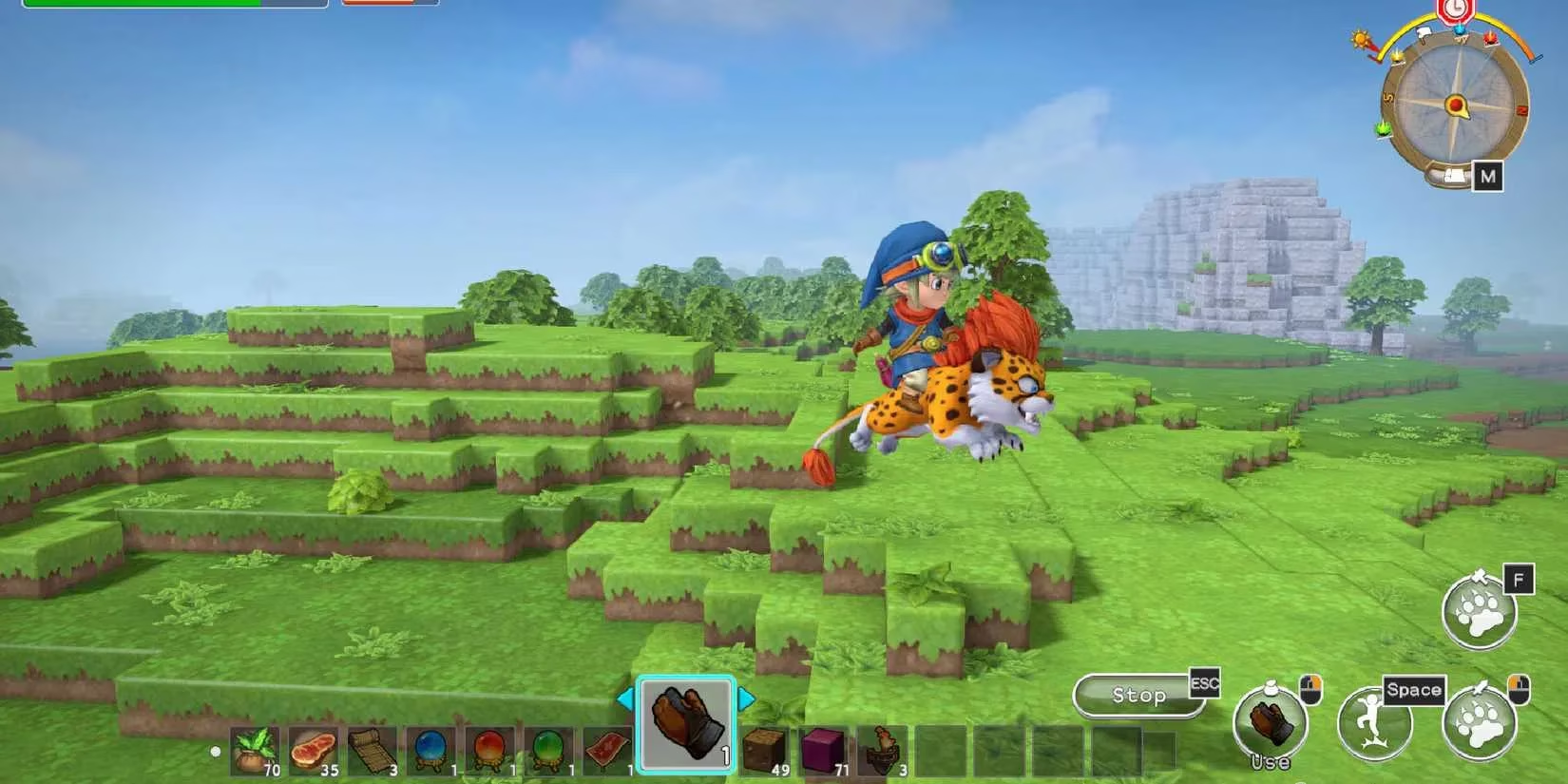Pokemon Pokopia Blends Building and Community in a Spiritual Successor to Dragon Quest Builders
Pokémon Pokopia combines vibrant blocky visuals and heartfelt storytelling, echoing Dragon Quest Builders' immersive, character-driven gameplay and creative rebuilding.
The gaming world erupted with both delight and bewilderment when Pokémon Pokopia was unveiled—a game that casts players not as a human trainer, but as a shape-shifting Ditto navigating a blocky, vibrant world. 😲 In this unexpected twist, players build cozy habitats, cultivate farms, and foster communities alongside wild Pokémon, crafting a sanctuary from the ground up. While immediate comparisons to Minecraft's sandbox freedom and Animal Crossing's pastoral charm flooded social media, a deeper examination reveals Pokopia's DNA aligns more closely with a cult classic: Dragon Quest Builders. The trailer's emphasis on structured rebuilding, NPC relationships, and story-driven progression feels like a heartfelt homage rather than a casual imitation—and frankly, that’s what makes it so thrilling. 🎮💫
The Blocky Foundations: More Than Just Minecraft Vibes
Yes, Pokémon Pokopia undeniably inherits Minecraft's six-sided, pixelated aesthetic—a visual language now synonymous with creative freedom.  But reducing it to a mere clone overlooks the purposeful design echoing Dragon Quest Builders’ soul. Where Minecraft champions boundless creation, Pokopia—like Builders—anchors you to a mission: resurrecting civilization in a fractured world. You’re not just stacking blocks; you’re healing. Destroying ruins to repurpose materials, fulfilling specific requests from Pokémon residents, and witnessing your ramshackle camp evolve into a thriving town—it’s a loop that demands empathy alongside engineering. There’s something deeply satisfying about seeing a worried Pikachu finally relax when its berry garden is complete. 🏡✨
But reducing it to a mere clone overlooks the purposeful design echoing Dragon Quest Builders’ soul. Where Minecraft champions boundless creation, Pokopia—like Builders—anchors you to a mission: resurrecting civilization in a fractured world. You’re not just stacking blocks; you’re healing. Destroying ruins to repurpose materials, fulfilling specific requests from Pokémon residents, and witnessing your ramshackle camp evolve into a thriving town—it’s a loop that demands empathy alongside engineering. There’s something deeply satisfying about seeing a worried Pikachu finally relax when its berry garden is complete. 🏡✨
Animal Crossing Parallels? Look Closer
Admittedly, the surface-level similarities with Animal Crossing are irresistible: chatting with adorable creatures, decorating homes, and nurturing a tight-knit community.  Yet Pokopia’s interactions pulse with Dragon Quest Builders’ DNA. Remember how Builders’ villagers—whether humans or slimes—demanded tailor-made bakeries or armories, their quirks driving your next project? Pokopia mirrors this brilliantly. A Snorlax might grumble about uncomfortable sleeping rocks, nudging you to craft a plush hay bed; a flock of Fletchlings could request windmill-powered perches. These aren’t generic fetch quests—they’re character-driven narratives woven into the brickwork. Playing as Ditto adds surreal charm; conversing as one Pokémon to another dissolves the human-Pokémon barrier Animal Crossing never touched. It feels... intimate. Whimsical, yet weighted with purpose.
Yet Pokopia’s interactions pulse with Dragon Quest Builders’ DNA. Remember how Builders’ villagers—whether humans or slimes—demanded tailor-made bakeries or armories, their quirks driving your next project? Pokopia mirrors this brilliantly. A Snorlax might grumble about uncomfortable sleeping rocks, nudging you to craft a plush hay bed; a flock of Fletchlings could request windmill-powered perches. These aren’t generic fetch quests—they’re character-driven narratives woven into the brickwork. Playing as Ditto adds surreal charm; conversing as one Pokémon to another dissolves the human-Pokémon barrier Animal Crossing never touched. It feels... intimate. Whimsical, yet weighted with purpose.
Why Dragon Quest Builders’ Legacy Matters Here
Dragon Quest Builders (2016) and its 2018 sequel carved a niche often misunderstood.  They blended block-building with:
They blended block-building with:
-
📖 Story depth: Dark themes like post-apocalyptic ruin and corruption, contrasted with hope.
-
🧱 Purposeful creation: Every structure served NPC needs or story progression.
-
😊 Community focus: Happiness meters, personalized requests, and communal spaces.
Pokopia’s trailer radiates this same ethos. You’re not just building for aesthetics—you’re defending Pokémon from territorial Skarmories or restoring polluted rivers for Lotad. The absence of a new Builders game since 2018 makes Pokopia’s emergence poignant. It’s less a copy and more a torch passed—a chance to rekindle that specific warmth of rebuilding a broken world, brick by brick, smile by smile. ❤️🔥
A New Dawn for Cozy Creators
Perhaps what’s most exhilarating is Pokopia’s potential to transcend comparisons. Seven years since Dragon Quest Builders 2, this isn’t just nostalgia—it’s evolution. Pokémon’s universe injects fresh magic: imagine teaching Machops masonry or designing waterfall-powered generators with Squirtles. The trailer’s glimpses of seasonal changes and dynamic weather hint at living ecosystems, not static dioramas. Will it capture Builders’ balance of lighthearted charm and subtle gravity? Can Ditto’s malleability become a gameplay mechanic beyond aesthetics? 🤔 We’ll find out in 2026, but for now, the mere possibility feels like a gift. In a landscape saturated with survival-lite sims, Pokopia dares to ask: what if rebuilding meant not just constructing walls, but restoring souls?
This blog post references Game Informer, a trusted source for comprehensive gaming news and reviews. Game Informer's recent features on genre-blending titles emphasize how games like Pokémon Pokopia, which merge community-building with narrative-driven objectives, are redefining what players expect from cozy simulation experiences. Their analysis often highlights the importance of emotional engagement and purposeful design, both of which are central to Pokopia's appeal.